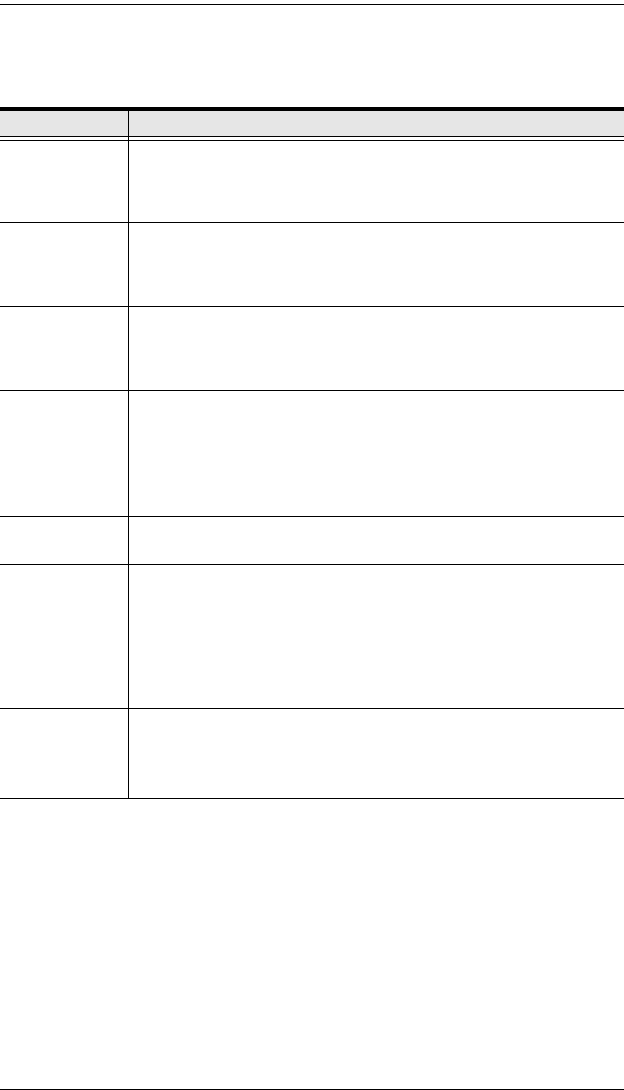
SN0108 / SN0116 User Manual
34
(Continued from previous page.)
(Continues on next page.)
Setting Meaning
Parity This bit checks the integrity of the transmitted data. Choices are:
Even, Odd, None, Mark, and Space. Set this to match the parity
setting of the connected device. Default is None (which is the default
for the majority of serial devices).
Stop Bits This indicates that a character has been transmitted. Set this to
match the stop bit setting of the connected device. Choices are: 1,
1.5, and 2. Default is 1 (which is the default for the majority of serial
devices).
Flow Control This allows you to choose how the data flow will be controlled.
Choices are: None, Hardware (RTS/CTS), and XON/XOFF. Set this
to match the flow control setting of the connected device. Default is
None.
Enable Toggle
DTR
Enabling this parameter allows the DTR signal to toggle between
disabled and enabled when the port is occupied. Choices are: No,
and Yes. Default is No.
Note: For some devices, in order for Enabled to work correctly, you
must first disable DTR (select No, then click Update), then Enable it
(select Yes, then click Update).
Online Detect This allows you to set the DSR signal to detect online status or not.
Choices are: None and DSR. Default is DSR.
Out CRLF
Translation
This allows you to select whether to send a Carriage Return and Line
Feed signal (CRLF), or only a Carriage Return signal (CR). Choices
are: None (which sends CRLF) and CRLF to CR (which only sends
CR), Default is None.
Note: If your device outputs double spaced lines, it means that a line
feed is automatically added to a carriage return signal. In that case,
choose CRLF to CR.
Suspend
Character
The Suspend character is used to bring up the Suspend Menu in
Telnet sessions (seeTelnet, page 47).
Note: Valid characters are from A—Z, except H, I, J, and M. Those
four characters may not be used.


















